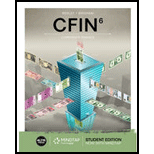
The graph which shows the relationship between yields and maturities on a particular date is known as the yield curve, and this relationship is simply called the term structure of securities. The yield curve could be upward sloping where the long-term yields are higher than the short-term yields and is also known as normal yield curve. However, if the long-term yields are lower than the short-term yields then the slope with be downward sloping and is referred to as inverted or abnormal yield curve.
Interest rate consists of risk-free rate, real risk-free rate and inflation premium, and a risk premium such as liquidity risk (LP), default risk (DRP) and maturity risk (MRP). Since, real risk-free rate generally remains constant, it is the changes in the expectation of risk premium and inflation which affects the interest rate of the security. Hence, inflation expectation is the most significant reason for changes in yield and determination of yield curve.
Interest rate or yield on treasuries can be determined using the below equation, where default risk premium (DRP) and liquidity premium (LP) is zero, as treasuries are considered as liquid and default free investment. Maturity risk premium (MRP) is there as they have differing maturity securities issued.
Expectation theory states that the shape of the yield curve depends on the expectation of future inflation rate and hence an increasing inflation rate will result in an upward sloping curve whereas a decreasing rate would result in downward sloping curve.
Yield on any bond is the average of the interest rates that is expected during its life and hence the yield of a bond with n year to maturity will be as below:
Here,
Interest rate for the first year of bond’s remaining life is “
Interest rate for the second year of bond’s remaining life is “
and so on.
Annual risk-free interest rates in 2023 and 2024 is expected to be 4.5% and 2.3%. Assume today is January 2, 2019 and interest rate of a four-year Treasury bond maturing in December 2022 is 2.5%.
Want to see the full answer?
Check out a sample textbook solution
- please don't use ai and if you cant understand given values please don't answer question otherwise unhelpful will be given.arrow_forwardfinance subjectarrow_forwardCould you help explain, what is the complete salary survey analysis, and ensuring the data is relevant and up-to-date? What is the job evaluation and compensation plan? How to ensure the final report is comprehensive, clearly structured, and aligned with the company vision?arrow_forward
- The maturity value of an $35,000 non-interest-bearing, simple discount 4%, 120-day note is:arrow_forwardCarl Sonntag wanted to compare what proceeds he would receive with a simple interest note versus a simple discount note. Both had the same terms: $18,905 at 10% for 4 years. Use ordinary interest as needed. Calculate the simple interest note proceeds. Calculate the simple discount note proceeds.arrow_forwardWhat you're solving for Solving for maturity value, discount period, bank discount, and proceeds of a note. What's given in the problem Face value: $55300 Rate of interest: 10% Length of note: 95 days Date of note: August 23rd Date note discounted: September 18th Bank discount rate:9 percentarrow_forward
 Essentials Of InvestmentsFinanceISBN:9781260013924Author:Bodie, Zvi, Kane, Alex, MARCUS, Alan J.Publisher:Mcgraw-hill Education,
Essentials Of InvestmentsFinanceISBN:9781260013924Author:Bodie, Zvi, Kane, Alex, MARCUS, Alan J.Publisher:Mcgraw-hill Education,

 Foundations Of FinanceFinanceISBN:9780134897264Author:KEOWN, Arthur J., Martin, John D., PETTY, J. WilliamPublisher:Pearson,
Foundations Of FinanceFinanceISBN:9780134897264Author:KEOWN, Arthur J., Martin, John D., PETTY, J. WilliamPublisher:Pearson, Fundamentals of Financial Management (MindTap Cou...FinanceISBN:9781337395250Author:Eugene F. Brigham, Joel F. HoustonPublisher:Cengage Learning
Fundamentals of Financial Management (MindTap Cou...FinanceISBN:9781337395250Author:Eugene F. Brigham, Joel F. HoustonPublisher:Cengage Learning Corporate Finance (The Mcgraw-hill/Irwin Series i...FinanceISBN:9780077861759Author:Stephen A. Ross Franco Modigliani Professor of Financial Economics Professor, Randolph W Westerfield Robert R. Dockson Deans Chair in Bus. Admin., Jeffrey Jaffe, Bradford D Jordan ProfessorPublisher:McGraw-Hill Education
Corporate Finance (The Mcgraw-hill/Irwin Series i...FinanceISBN:9780077861759Author:Stephen A. Ross Franco Modigliani Professor of Financial Economics Professor, Randolph W Westerfield Robert R. Dockson Deans Chair in Bus. Admin., Jeffrey Jaffe, Bradford D Jordan ProfessorPublisher:McGraw-Hill Education





